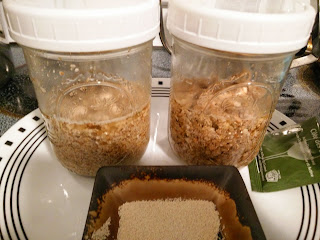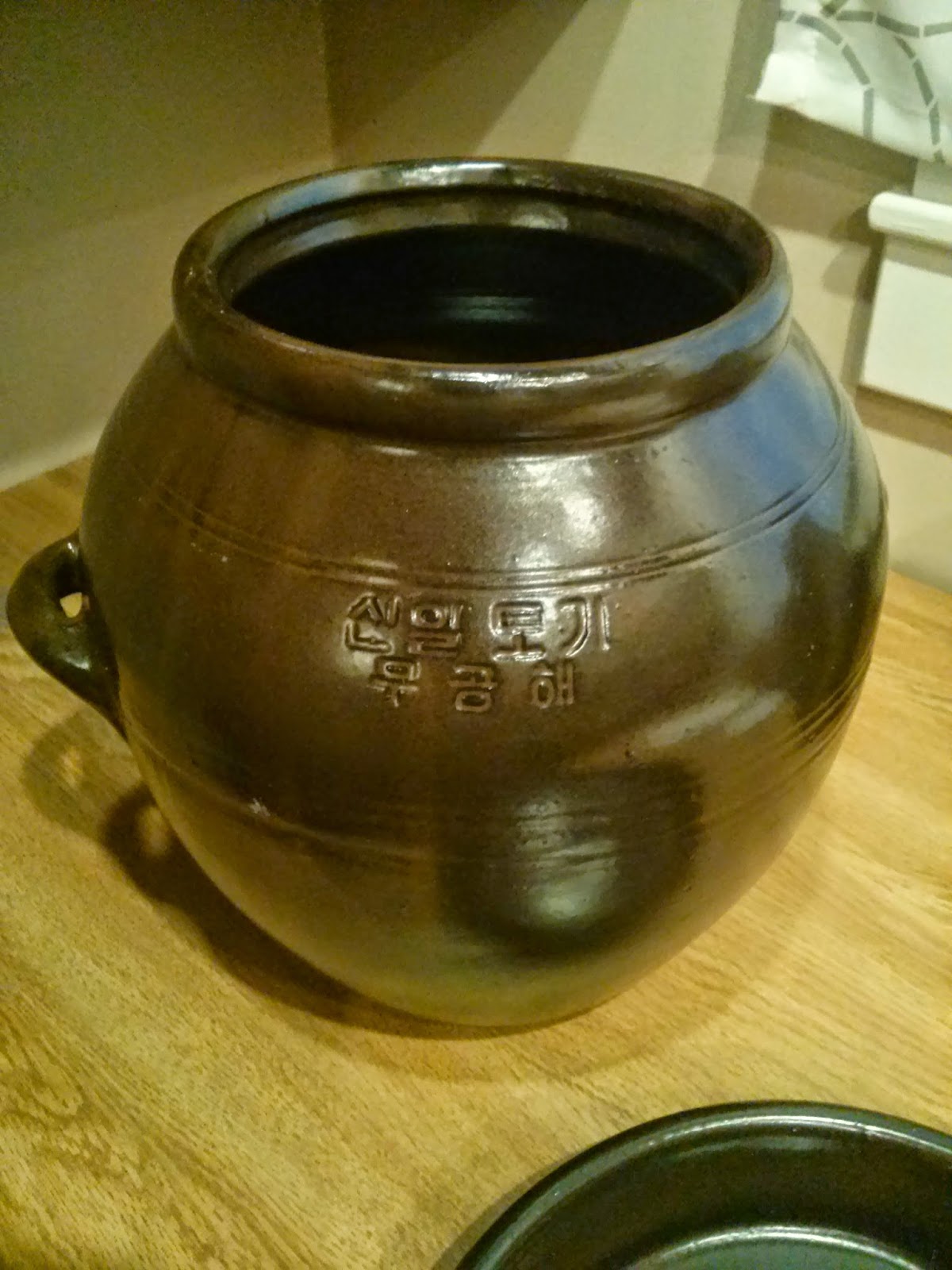Dual Brew: Added Yeast | 100% Nuruk
I haven't posted in a while, but a lot of good things have been happening.
I've been doing a lot of travel for work, and talking to some wonderful people from the makgeolli brewing community in Korea.
As part of those discussions the following two brews came about: An Iyangju using added yeast, and a Danyangju using nuruk only. Both brews used 100% sweet rice and a sweet rice starter. I'll explain each one below.
The starter.
The starter used is a bit of a trade secret (shhh), but I will tell you this. It uses rice flour, nuruk and water. That's it.
 |
| Freshly made starter |
Had I developed this starter on my own I'd share more specific details with you, but this was shared with me by a friend requesting confidentiality.
The starter was made and let sit for 24-48 hours, depending on the progress. I added yeast to one starter and it took off and was about a day ahead of the nuruk only starter, which took about 72 hours. This was expected and because of it I was able to stagger the start of the brews, which made preparing the primary fermentation easier.
The iyangju.
The iyangju had 1kg of sweet rice, which was split into two feeds of 500g. The first was about 24 hours after the starter was made and the second was about 48 hours after the first. Iyangju means two-stage brew,
The danyangju.
I had originally planned to make both brews iyangju, but I missed the window to add a second feed to the nuruk only starter. As a result the danyangj used only 500g of sweet rice; a much smaller brew. Danyangju means single-stage brew.
No additional nuruk was added to either brew after the starter.
The results.
The yeast fed starter was ready for primary fermentation after about 24 hours. The top of the starter was bubbling away vigorously, so I added the first batch of godubap.
 |
| Yeast fed starter |
 |
| Nuruk-only starter |
At the 48 hour mark I added more godubap to the yeast fed starter, which makes it iyangju (two feeds). The nuruk-only starter was not yet ready, though it looked normal. I wanted to wait for a similar level of activity as the yeast starter, and I was also waiting for a particular aroma to arise. The fermentation (read: alcohol) smell was weak, and I thought it should be stronger.
 |
| Yeast fed iyangju: first feed of 500g sweet rice |
 |
| Yeast fed iyangju: second feed of 500g sweet rice |
At about 72 hours godubap was added to the nuruk-only starter.
The next day the top of the brew was covered with a thin, yogurt-like layer and had a slight sour smell to it. I ignored the top layer and proceeded to stir. After a few stirs the layer dissipated and everything looked normal. There was still a slight sour smell, though.
 |
| Nuruk-only danyangju 1 day after start of primary fermentation |
 |
| Nuruk-only danyangju: about 3 days into primary fermentation |
Both brews fermented at about 22C until they were ready to filter.
The danyangju finished fermenting first, about 5 days after adding the godubap to the nuruk-only starter. The yogurt-like layer did not return after the first day, but a slightly sour smell did remain. I think there may have been excess lactobacillus present in this brew. A thin layer of clear alcohol can be seen in the picture below.
I filtered and bottled the danyangju using the Mirro strainer setup that I wrote about in my previous post. The undiluted wonju was strong and a bit sour, more so than I enjoy. I left some space in the bottles and set them in the fridge. In a couple of days the sour taste should mellow out quite a bit, and I expect the wild yeasts from the nuruk will produce some extra carbonation.
The iyangju took almost a week longer to complete, which makes sense because there is twice as much rice to ferment. No surprises here; just a steady, slow fermentation.
 |
| The iyangju about a week from completion |
 |
| Iyangju on day of bottling |
 |
| Side view of the jar shows all the broken-down rice |
Below the iyangju is on the right, and my friend's brew is on the left. The taste of the iyangju was a lot cleaner and tamer than the danyangju. I think a multi-stage fermentation results in a stronger alcohol and a slightly more refined taste. The addition of yeast in the starter was also a major difference. I will probably try more brews with nuruk-only in the future, but I want to note that adding wine yeast is a more reliable approach for beginners.
Cheers!








Comments
Post a Comment